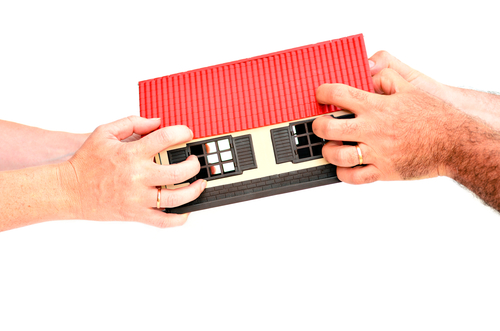 Many children are placed in foster care after Child Protective Services or a similar agency removes them from their natural home because of concerns about the child’s safety or wellbeing. This can often launch a daunting legal proceeding in which parents must prove they have remedied the situation so that the children can be returned to a safe environment. Mediation can be used as an alternative to this formal and stressful litigated process.
Many children are placed in foster care after Child Protective Services or a similar agency removes them from their natural home because of concerns about the child’s safety or wellbeing. This can often launch a daunting legal proceeding in which parents must prove they have remedied the situation so that the children can be returned to a safe environment. Mediation can be used as an alternative to this formal and stressful litigated process.
The mediation process is a voluntary process that involves the parties working together with a neutral third party who is skilled at conflict resolution. The parties work together to form a safety plan that is in the best interests of the child. This process can help the parties avoid adversarial court battles while being an inherent part of the solution.
Mediation allows the parties to work together to create a child safety plan that is tailored to the unique needs of the family. Rather than pitting biological parents and foster parents against each other, the process brings them together to work together toward mutual goals. The parties can have objective focus on what is best for the children and use this focus to guide the process. Because the parties are part of the solution, they can all feel that they have accomplished meaningful goals by working together rather than making parents feel that they are deficient or are being judged. Additionally, because the parties help come up with the plan, they are more likely to make strides towards accomplishing the objectives in the plan and to comply with it since they had a hand in drafting it.
Having a child-centered focus that is based on collaboration between the parties can serve as an effective alternative to litigation that addresses child protection cases to the benefit of all parties concerned.





 Mediation is an effective tool when dealing with family law issues. In the last few years, the use of mediation in foster care, adoption and dependency and neglect cases has risen exponentially. More communities recognize the efficacy of this tool, spurring them to adopt new mediation programs to address these issues. The traditional adversarial process involved in foster care and child protection cases often has inherent shortcomings that do not serve the best interests of the child or the parties involved. As such, mediation provides an effective alternative.
Mediation is an effective tool when dealing with family law issues. In the last few years, the use of mediation in foster care, adoption and dependency and neglect cases has risen exponentially. More communities recognize the efficacy of this tool, spurring them to adopt new mediation programs to address these issues. The traditional adversarial process involved in foster care and child protection cases often has inherent shortcomings that do not serve the best interests of the child or the parties involved. As such, mediation provides an effective alternative. Libel or defamation cases may arise when someone says something negative about another person such as a business owner that has an adverse effect on his or her reputation. This statement may even be in written form, such as a publication made to the media or a negative review of services. Businesses are particularly concerned about their public image because a negative interaction can cost them business from others down the line. When parties confront these legal challenges, they may decide to litigate the case, or they may decide to mediate it.
Libel or defamation cases may arise when someone says something negative about another person such as a business owner that has an adverse effect on his or her reputation. This statement may even be in written form, such as a publication made to the media or a negative review of services. Businesses are particularly concerned about their public image because a negative interaction can cost them business from others down the line. When parties confront these legal challenges, they may decide to litigate the case, or they may decide to mediate it. Mediation is particularly helpful in certain contexts when the parties have an established relationship that they want to preserve, such as in family disputes or disputes involving business people. Mediators use conflict resolution skills to help the parties understand the other side better and to communicate in a respectful way with the eventual hope of settling the case. Part of this process involves brainstorming creative solutions that can resolve the dispute. The parties are able to come up with nearly any solution that works for them and are not limited to typical judicial remedies. Some possible solutions include:
Mediation is particularly helpful in certain contexts when the parties have an established relationship that they want to preserve, such as in family disputes or disputes involving business people. Mediators use conflict resolution skills to help the parties understand the other side better and to communicate in a respectful way with the eventual hope of settling the case. Part of this process involves brainstorming creative solutions that can resolve the dispute. The parties are able to come up with nearly any solution that works for them and are not limited to typical judicial remedies. Some possible solutions include: When a couple is going through the divorce process, they may not agree about issues related to community property. Mediation and arbitration are two alternatives to litigation that allow the parties to reach a resolution to these issues. While the process for them are different, mediation and arbitration are often much cheaper than trying to sort out the issues through litigation. They are also cheaper than litigating the case. Some issues related to community property may be:
When a couple is going through the divorce process, they may not agree about issues related to community property. Mediation and arbitration are two alternatives to litigation that allow the parties to reach a resolution to these issues. While the process for them are different, mediation and arbitration are often much cheaper than trying to sort out the issues through litigation. They are also cheaper than litigating the case. Some issues related to community property may be: Although mediation has been around for several decades, it continues to expand into new and exciting areas. Commodities matters may involve issues related to futures such as making investments based on ideas related to the future market prices of the investments. Mediation may be used to resolve issues related to future investments, claims against introducing brokers, merchant commission, allegations regarding misrepresentations or omissions of material facts, providing unsuitable investment advice, conflicts of interest and other matters involved with commodities.
Although mediation has been around for several decades, it continues to expand into new and exciting areas. Commodities matters may involve issues related to futures such as making investments based on ideas related to the future market prices of the investments. Mediation may be used to resolve issues related to future investments, claims against introducing brokers, merchant commission, allegations regarding misrepresentations or omissions of material facts, providing unsuitable investment advice, conflicts of interest and other matters involved with commodities. Mediation can be used in a number of cases as an effective and affordable way to resolve conflict. This method can be used in collection cases as a way to help debtors and creditors find middle ground and come up with a solution that benefits both of them. At the end of successful mediation, the parties can have a new agreement in place that is enforceable as a separate contract.
Mediation can be used in a number of cases as an effective and affordable way to resolve conflict. This method can be used in collection cases as a way to help debtors and creditors find middle ground and come up with a solution that benefits both of them. At the end of successful mediation, the parties can have a new agreement in place that is enforceable as a separate contract.